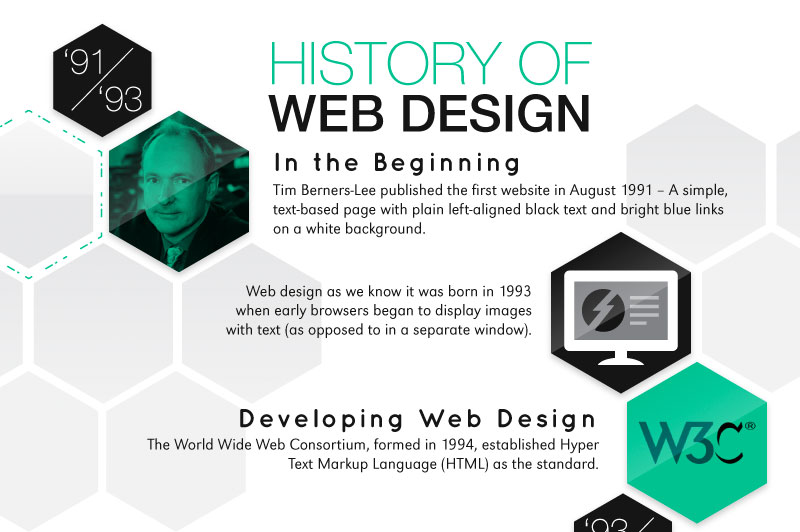The Advancement Of Web Design: Then And Now
The Advancement Of Web Design: Then And Now
Blog Article
Post Developed By-Kinney Dalby
In the past, sites were basic and concentrated on information. Navigation was direct, and design was for desktops. Now, customer experience is vital. Information guides styles for very easy navigating. Responsive designs fit various tools. Today, dark mode decreases strain, and minimalist menus improve navigation. Interactive features involve individuals, and bold visuals stick out. AI integration increases engagement. See just how design has progressed to boost your on the internet trip.
Very Early Days of Web Design
In the very early days of website design, simplicity preponderated. Websites were basic, with minimal shades, typefaces, and formats. The emphasis was on giving details as opposed to showy visuals. Customers accessed the net via sluggish dial-up connections, so rate and functionality were crucial.
Navigating food selections were straightforward, normally situated on top or side of the page. Web sites were made for home computer, as mobile browsing wasn't yet common. Content was king, and developers focused on very easy readability over intricate design aspects.
HTML was the primary coding language used, and developers needed to function within its restrictions. Animations and interactive features were very little compared to today's standards. Internet sites were static, with little dynamic material or tailored user experiences.
Rise of User-Focused Layout
With the advancement of web site design, a shift in the direction of user-focused style concepts has actually become significantly prominent. Today, producing internet sites that prioritize individual experience is vital for engaging site visitors and attaining service goals. User-focused layout includes understanding the needs, choices, and habits of your target audience to tailor the web site's design, material, and features appropriately.
Developers now carry out thorough research, such as customer surveys and functionality screening, to gather understandings and responses straight from customers. This data-driven strategy aids in creating intuitive navigation, clear calls-to-action, and visually attractive interfaces that resonate with visitors. By placing the user at the facility of the style procedure, internet sites can supply an extra customized and enjoyable experience.
Responsive design has likewise become a key facet of user-focused design, guaranteeing that web sites are maximized for different devices and display sizes. This adaptability boosts ease of access and usability, satisfying the varied ways individuals connect with web sites today. In essence, the rise of user-focused style indicates a shift in the direction of creating digital experiences that prioritize the demands and assumptions of completion user.
Modern Trends in Web Design
Check out the current fads shaping website design today. One prominent pattern is dark mode layout, supplying a sleek and modern look while decreasing eye strain in low-light settings. An additional key pattern is minimalist navigation, simplifying menus and improving user experience by focusing on essential elements. Incorporating linked site -interactions, such as animated switches or scrolling effects, can produce an extra appealing and interactive internet site. Receptive style stays important, making certain smooth individual experiences across different gadgets. In addition, utilizing vibrant typography and unbalanced formats can include visual passion and accentuate particular material.
Incorporating AI innovation, like chatbots for consumer assistance or individualized recommendations, improves individual involvement and enhances procedures. Accessibility has additionally become a significant pattern, with designers focusing on inclusive design methods to cater to diverse customer needs. Welcoming sustainability by maximizing internet site performance for speed and performance is an additional arising trend in web design. Teaming up with customer feedback and information analytics to repeat and improve layout continuously is vital for remaining relevant in the ever-evolving electronic landscape. By embracing these modern fads, you can create a visually enticing, easy to use site that reverberates with your target market.
Verdict
As you review the advancement of site style from the very early days to currently, you can see how user-focused design has ended up being the driving pressure behind modern trends.
Accept the trip of modification and adjustment in website design, always keeping the customer experience at the leading edge.
Keep existing with the current fads and innovations, and never quit developing your technique to create visually magnificent and easy to use web sites.
Evolve, adjust, and develop - the future of web design is in your hands.
